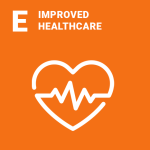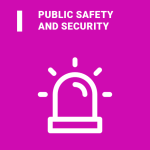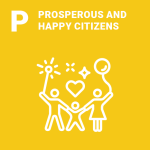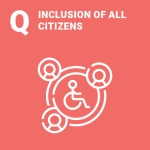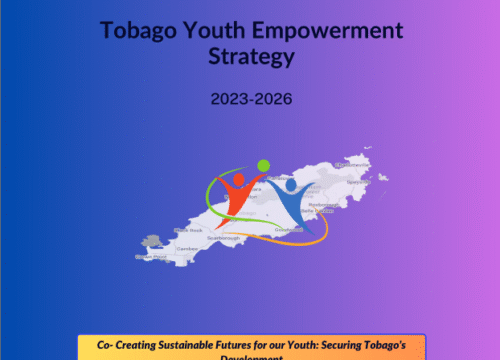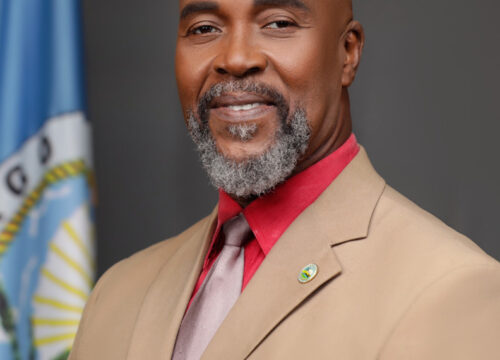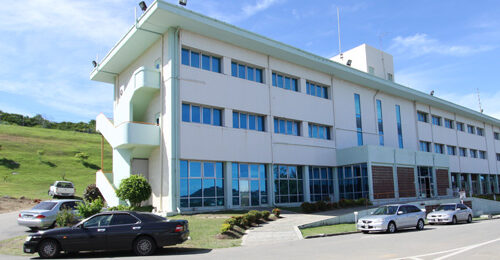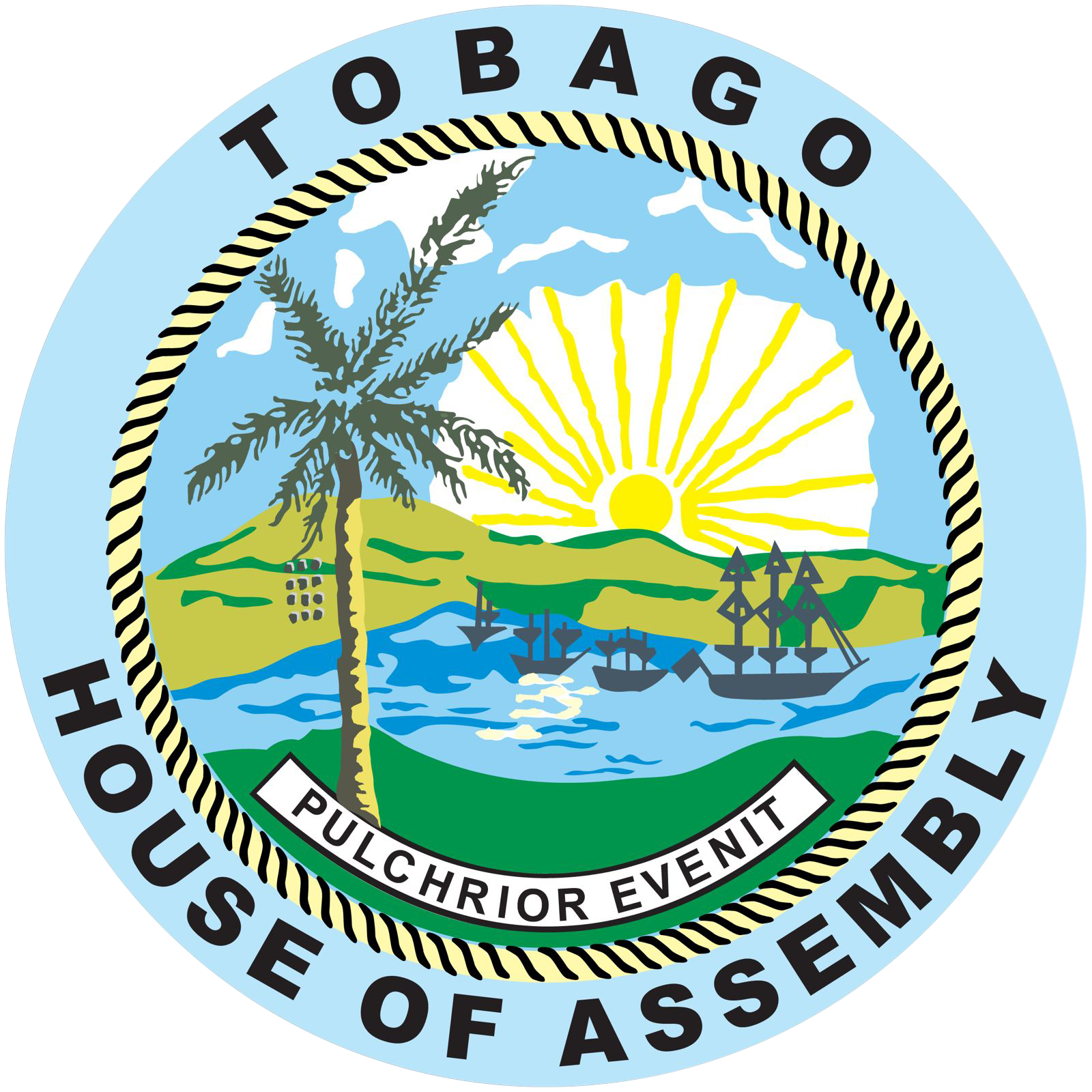DEVELOPMENT AGENDA PRIORITY Q: Full inclusion of all persons with disabilities in all aspects of the society and economy.
About the
PriorityPerformance
benchmarksMajor
ConcernsSelected
Focus
AreasTargets &
IndicatorsPolicies, Plans
& ProgrammesProjects
PriorityPerformance
benchmarksMajor
ConcernsSelected
Focus
AreasTargets &
IndicatorsPolicies, Plans
& ProgrammesProjects
About priority Q
- All citizens, legal residents, and visitors of Tobago, regardless of their abilities, must enjoy the same fundamental rights and freedoms, equitably and without discrimination.
- The enjoyment of these rights and freedoms must be evident through the participation of individuals with different abilities in all aspects of society, including government, public service, the private sector, and community activities.
- By focusing on priority Q, Tobagonians will work towards creating an inclusive society where all persons with disabilities can participate fully in all aspects of its social and economic development.
Primary performance benchmark: Priority Q
- Benchmark: Achieve 60% inclusion of persons with disabilities in all areas of society and the economy by 2035 and 75% by 2045.
-
Indicator of progress/success: Inclusion of persons with disabilities in all areas of society and the economy year-over-year.
-
Benchmark country: Norway.
Major concerns: Priority Q.
| Concerns | Problem Statements |
| Inclusion policy | a. The lack of a formal inclusion policy. |
| Seamless integration | b. The unwillingness of public institutions and the private sector to seamlessly include persons with disabilities. |
| Cultural and institutional bias | c. Deep-seated cultural and institutional biases that normalize the exclusion of persons with disabilities from various aspects of society and the economy. |
| Societal acceptance | d. The passive acceptance of the underachievement of persons with disabilities. |
1.0 Selected Focus Areas Priority Q?
In line with the United Nations Convention on the Rights of Persons with Disabilities, the THA will establish a Department of Disability Inclusion (DDI) within the Division of Health, Wellness and Social Protection to ensure that all persons with disabilities are fully integrated into all aspects of economic and social life in Tobago. The DDI will collaborate with the proposed Division of Planning and Development, the Division of Finance, and the Division of Finance and the Economy to focus on the following areas:
- Disability Inclusion:
- Disability Sensitive Measures: Integrate disability-sensitive measures into the design, implementation, monitoring, and evaluation of all policies and programs to ensure that the needs of persons with disabilities are considered in all aspects of development planning and implementation.
- Targeted Support: Create specific initiatives to empower individuals with disabilities, including those aimed at enhancing access to support services, healthcare, education, social activities, and political representation.
- Accessibility and Physical Barriers:
- Physical Accessibility: Ensure that all public and private facilities—such as schools, workplaces, transportation, and recreational areas—are accessible to persons with disabilities. This involves retrofitting existing facilities and designing new ones with universal access in mind.
- Assistive Technology: Promote the use of assistive technologies to enable persons with disabilities to perform daily activities and participate fully in society, including providing hearing aids, mobility devices, and other necessary equipment.
- Education and Employment:
- Inclusive Education: Ensure children and adults with disabilities have equal access to quality education by promoting inclusive education methods and providing accessible learning materials.
- Employment Opportunities: Implement employment strategies that assist individuals with disabilities in securing and retaining jobs by advancing skills training, offering job placement services, and fostering inclusive work settings.
- Digital Inclusion:
- Digital Accessibility: Ensure that digital technologies and online services are accessible to persons with disabilities, including the development of accessible websites, digital content, and e-government services..
- Innovative Technologies: Leverage innovative technologies to offer inclusive services and support to persons with disabilities, including digital platforms for access to education, healthcare, and employment services.
- Awareness and Attitudinal Change:
- Public Awareness Campaigns: Conduct campaigns to raise awareness about the rights and capabilities of individuals with disabilities, thereby reducing stigma and discrimination and promoting a more inclusive society.
- Training and Sensitization: Sensitize government officials, employers, educators, and the general public on disability rights and inclusion to create a more supportive and understanding environment for persons with disabilities.
- Community and social support:
- Community Engagement: Promote community spaces that support the inclusion of persons with disabilities, including community centers, recreational facilities, parks and other open areas.
- Social Protection: Develop social protection systems that provide financial assistance, healthcare, and other essential support to individuals with disabilities, ensuring they have the necessary resources to participate fully in society and the economy.
MAIN REFERENCE INFORMATION
- National policy on persons with disabilities, July 2018
- National Digital Transformation Strategy 2024-2027
- Inclusive Education
- UNESCO: Digital technologies for the inclusion of disadvantaged communities and marginalized groups supported by IFAP
- Employment Strategy for Canadians with Disabilities
- Fact Sheet: Advancing Disability Inclusive Democracy in the United States and Globally
- A Guide for Achieving Full Community Inclusion
- Disability Inclusion Barriers
- Latin America and the Caribbean Inclusion and education: All means all
- Convention on the Rights of Persons with Disabilities (CRPD)
Targets and Indicators of Progress/Success
Target-Q-1
By 2026, in line with the United Nations Convention on the Rights of Persons with Disabilities, establish the Department of Disability Inclusion, DDI, to ensure that all persons with disabilities are fully integrated into all aspects of economic and social life.
Indicator-Q-1
The Department of Disability Inclusion is established and operational by 2026.
Target-Q-2
Integrate at least 50% of children with disabilities into all levels of the education system by 2035 and at least 95% by 2045.
Indicator-Q-2
The number of children with disabilities integrated into all levels of the education system year-over-year.
Target-Q-3
Integrate at least 50% of all working-age adults with disabilities into the public and private workforce by 2035 and at least 100% by 2045.
Indicator-Q-3
The number of working-age adults with disabilities integrated into the main workforce year-over-year.
Target-Q-4
Ensure that at least 50% of all public spaces have universal access for persons with disabilities by 2035 and at least 100% of public spaces by 2045.
Indicator-Q-4
The number of public spaces with universal access for persons with disabilities year-over-year.
Target-Q-5
Ensure that at least 50% of all government services are easily accessible to persons with disabilities by 2035 and 100% of services by 2045.
Indicator-Q-5
Number and categories of government services accessible to persons with disabilities year-over-year.
Target-Q-6
Ensure that at least 50% of all public transportation systems are equipped to accommodate persons with disabilities by 2035 and 100% by 2045.
Indicator-Q-6
Number and categories of public transportation systems equipped to accommodate persons with disabilities year-over-year.
Target-Q-7
Ensure that at least 50% of all persons with disabilities have access to affordable housing by 2035 and 100% by 2045.
Indicator-Q-7
Number of persons with disabilities living in affordable housing year-over-year.
Target-Q-8
Invest an appropriate % equivalent of GDP on the inclusion of all persons with disabilities by 2035, and an appropriate % equivalent of GDP by 2045.
Indicator-Q-8
Percentage of GDP equivalent invested in the inclusion of all persons with disabilities year-over-year.

